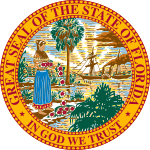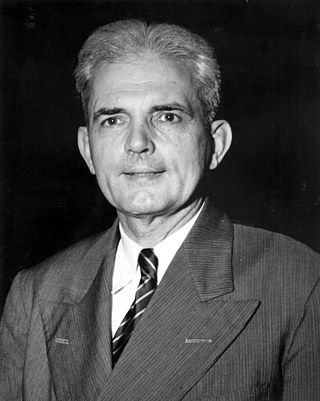
Spessard Lindsey Holland was an American lawyer and politician. He served as the 28th Governor of Florida from 1941 to 1945, and later as a US senator for Florida from 1946 to 1971. He was the first person born in Florida to serve as Governor and US Senator for the state. While serving as a US Senator he would notably introduce the 24th Amendment.
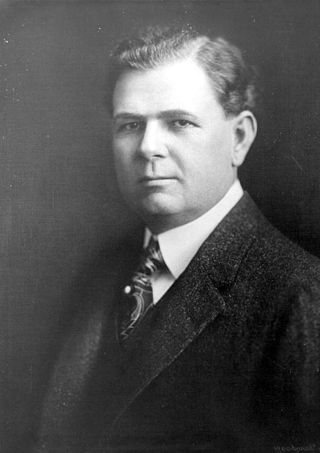
Park Monroe Trammell, was an American attorney and politician from the state of Florida. Trammell represented Florida in the United States Senate from 1917 until his death in 1936. As chair of the Senate Naval Affairs Committee, Trammell was essential in the creation of several laws that revitalized the United States Navy. Trammell previously served as the Governor of Florida and Florida Attorney General.

Claude Roy Kirk Jr. was an American businessman and politician who served as the 36th governor of Florida from 1967 to 1971. A Republican for most his career, he was the first Republican governor of Florida since Reconstruction.

The 1970 United States Senate elections was an election for the United States Senate. It took place on November 3, with the 33 seats of Class 1 contested in regular elections. Special elections were also held to fill vacancies. These races occurred in the middle of Richard Nixon's first term as president. The Democrats lost a net of three seats, while the Republicans and the Conservative Party of New York picked up one net seat each, and former Democrat Harry F. Byrd Jr. was re-elected as an independent.

The 1964 United States Senate elections were held on November 3. The 33 seats of Class 1 were contested in regular elections. Special elections were also held to fill vacancies. They coincided with the election of President Lyndon B. Johnson by an overwhelming majority, to a full term. His Democratic Party picked up a net two seats from the Republicans. As of 2023, this was the last time either party has had a two-thirds majority in the Senate, which allowed the Senate Democrats to override a veto, propose constitutional amendments, or convict and expel certain officials without any votes from Senate Republicans. However, internal divisions would have prevented the Democrats from having done so. The Senate election cycle coincided with Democratic gains in the House in the same year.

The 1958 United States Senate elections were elections for the United States Senate which occurred in the middle of President Dwight D. Eisenhower's second term. Thirty-two seats of Class 1 were contested in regular elections, the new state of Alaska held its first Senate elections for its Class 2 and 3 seats, and two special elections were held to fill vacancies.

The 1950 United States Senate elections occurred in the middle of Harry S. Truman's second term as president. The 32 seats of Class 3 were contested in regular elections, and four special elections were held to fill vacancies. As with most 20th-century second-term midterms, the party not holding the presidency made significant gains. The Republican opposition made a net gain of five seats, taking advantage of the Democratic administration's declining popularity during the Cold War and the aftermath of the Recession of 1949. The Democrats held a narrow 49-to-47-seat majority after the election. This was the first time since 1932 that the Senate majority leader lost his seat, and the only instance of the majority leader losing his seat while his party retained the majority.

The 1936 United States Senate elections coincided with the reelection of President Franklin D. Roosevelt. The 32 seats of Class 2 were contested in regular elections, and special elections were held to fill vacancies. The Great Depression continued and voters backed progressive candidates favoring Roosevelt's New Deal in races across the country. The Democrats gained 5 net seats during the election, and in combination with Democratic and Farmer–Labor interim appointments and the defection of George W. Norris from the Republican Party to become independent, the Republicans were reduced to 16 seats. Democrats gained a further two seats due to mid-term vacancies. The Democrats' 77 seats and their 62-seat majority remain their largest in history.

The 1990 Florida gubernatorial election took place on November 6, 1990. Incumbent Republican Governor Bob Martinez ran for a second term in office, but was defeated by Democratic challenger Lawton Chiles, a former U.S. Senator.

The 1970 Florida gubernatorial election took place on November 3, 1970, to determine the Governor and Lieutenant Governor of Florida, concurrent with the election to the United States Senate, elections to the United States House of Representatives, and various state and local elections.

The 1970 United States Senate election in Florida was held on November 3, 1970. Incumbent Democratic U.S. Senator Spessard Holland decided to retire instead of seeking a fifth term. During the Democratic primary, former Governor C. Farris Bryant and State Senator Lawton Chiles advanced to a run-off, having received more votes than Speaker of the Florida House of Representatives Frederick H. Schultz, attorney Alcee Hastings, and State Representative Joel T. Daves III. Chiles soundly defeated Bryant in the run-off election, scoring a major upset due to his comparatively small name recognition prior to the election. To acquire name recognition and media coverage, Chiles walked about 1,003 miles (1,614 km) across the state of Florida and was given the nickname "Walkin' Lawton".
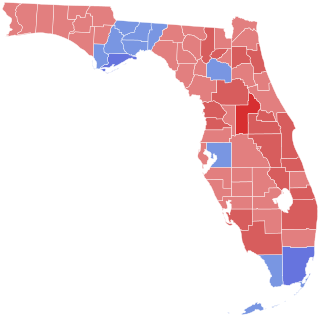
The 1966 Florida gubernatorial election took place on November 8, 1966. During the primary election, the results from the Democratic Party were close among three of the four candidates. Thus, the top two Democrat candidates – incumbent Governor of Florida William "Haydon" Burns and Mayor of Miami Robert King High – competed in a runoff election on May 24, 1966. In an upset outcome, Robert King High was chosen over W. Haydon Burns as the Democratic Gubernatorial nominee. In contrast, the Republican primary was rather uneventful, with businessman Claude Roy Kirk Jr. easily securing the Republican nomination against Richard Muldrew. This was the first time a Republican was elected governor since Reconstruction.

The 1976 United States Senate election in Florida was held on November 2, 1976. Incumbent Democratic U.S. Senator Lawton Chiles won re-election to a second term.

The 1950 United States Senate election in Florida was held on November 7, 1950. Incumbent Senator Claude Pepper ran for a third term in office but was defeated in the Democratic primary by U.S. Representative George Smathers, who went on to easily win the general election.

The 1952 United States Senate election in Florida was held on November 4, 1952. Incumbent Senator Spessard Holland was easily re-elected to a second term in office.
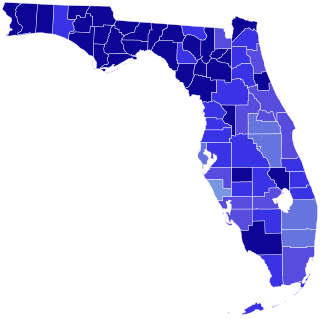
The 1946 United States Senate election in Florida was held on November 5, 1946.
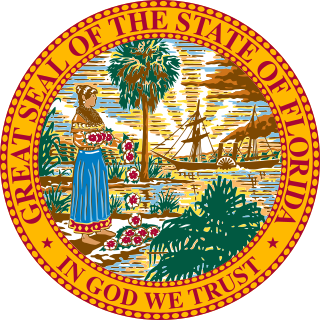
The 1928 United States Senate election in Florida was held on November 6, 1928.

The 1934 United States Senate election in Florida was held on November 6, 1934.

The 1962 United States Senate election in Florida took place on November 6, 1962. Incumbent Democratic Senator George Smathers won re-election to a third term. As of 2023, this is the last time that a winning United States Senate candidate carried all counties in Florida for the Class 3 Senate seat from Florida and the last time that a winning United States Senate candidate carried all counties in Florida for a Senate seat from Florida until 1994.

The 1964 United States Senate election in Florida was held on November 3, 1964. Incumbent Democratic U.S. Senator Spessard Holland was re-elected to a fourth term in office, defeating J. Brailey Oldham in the primary and Republican Claude R. Kirk Jr. in the general election.

